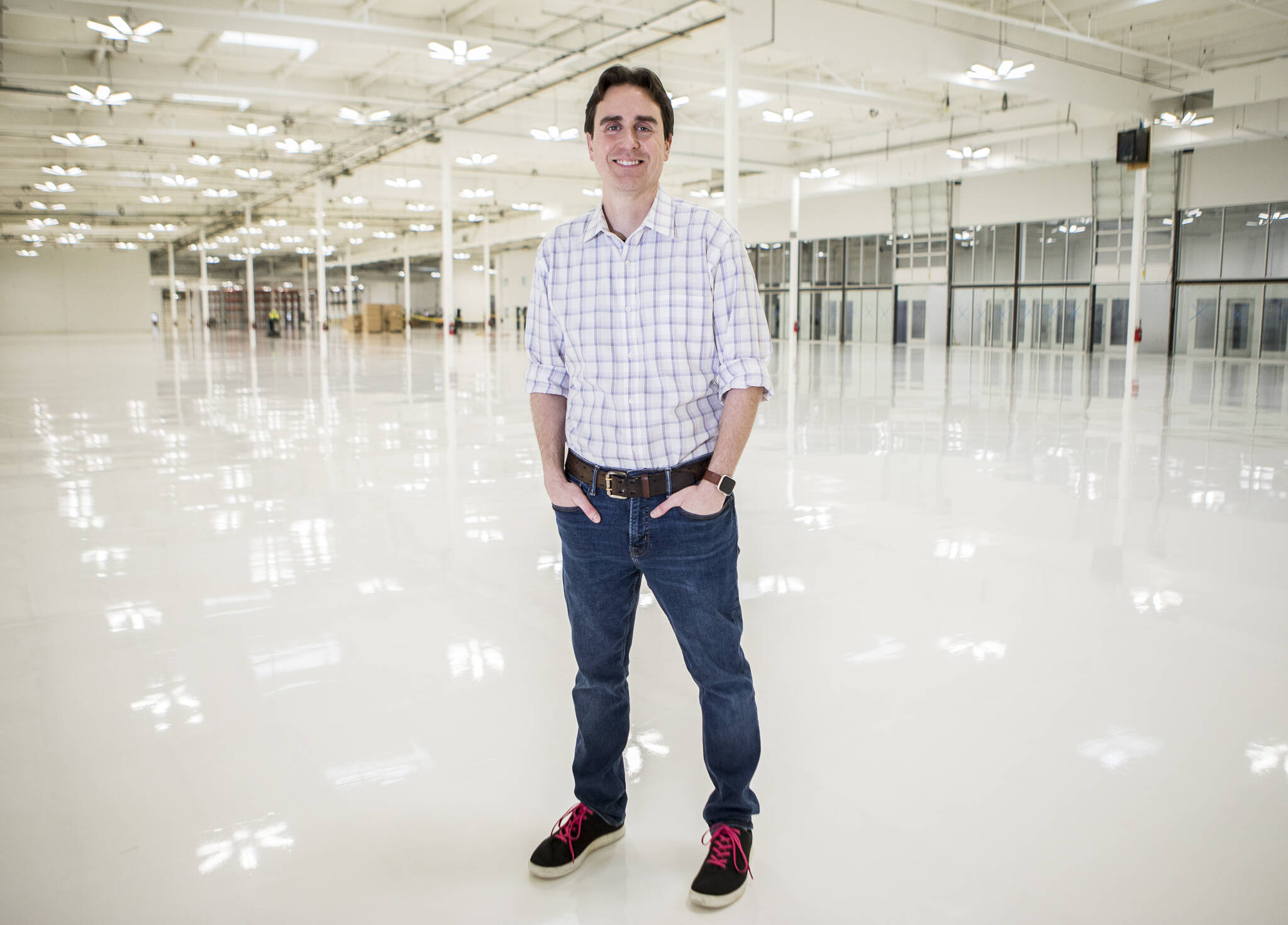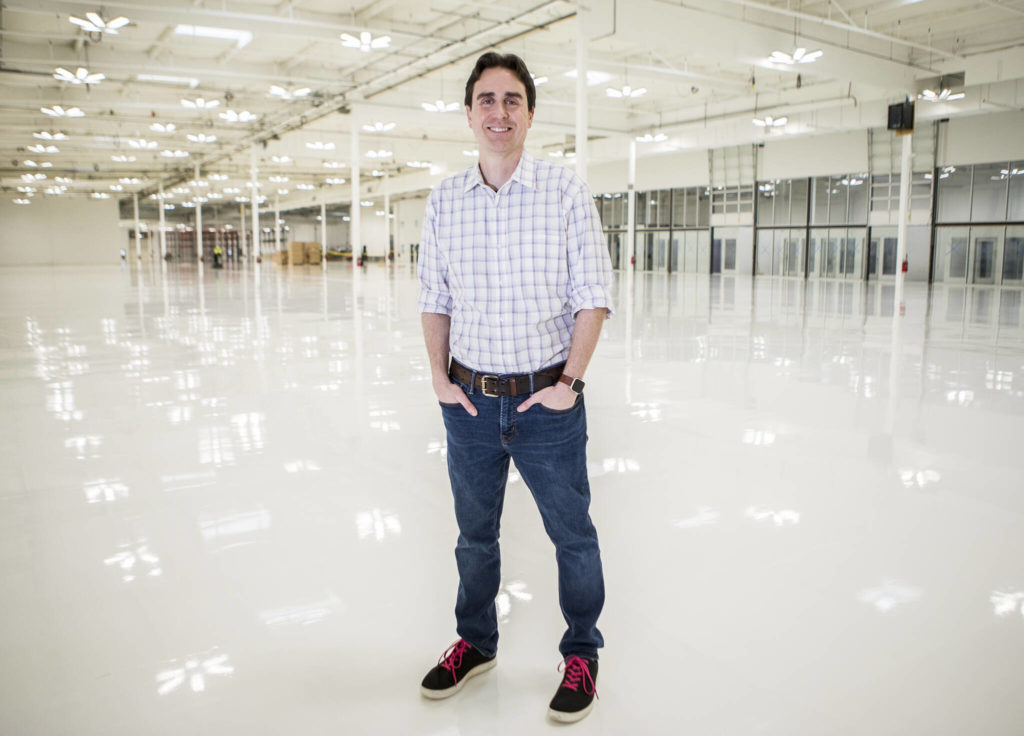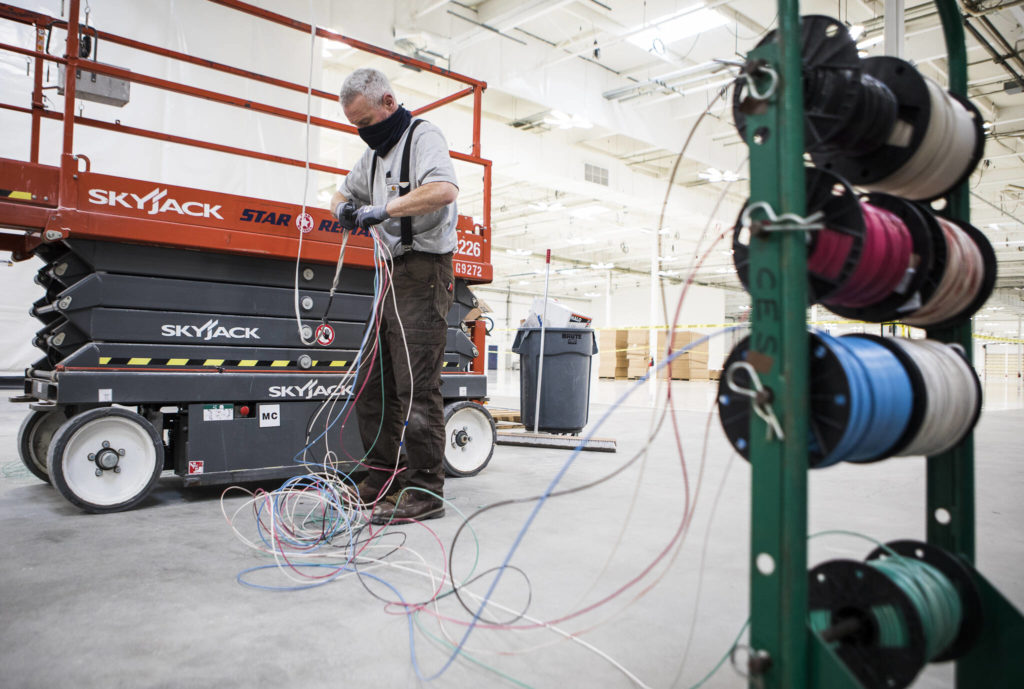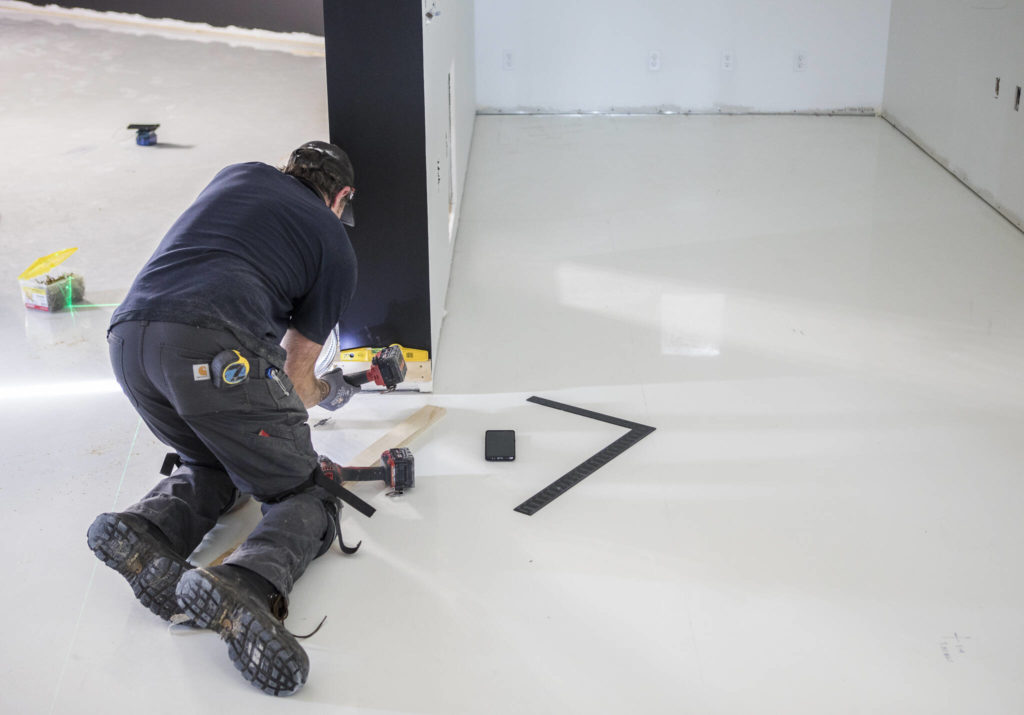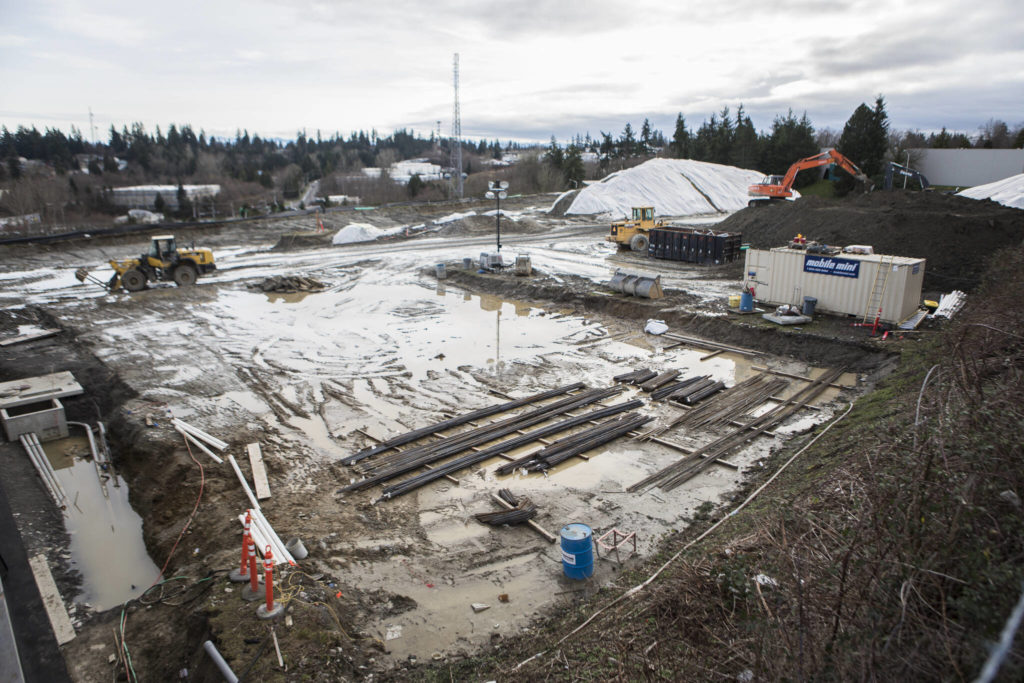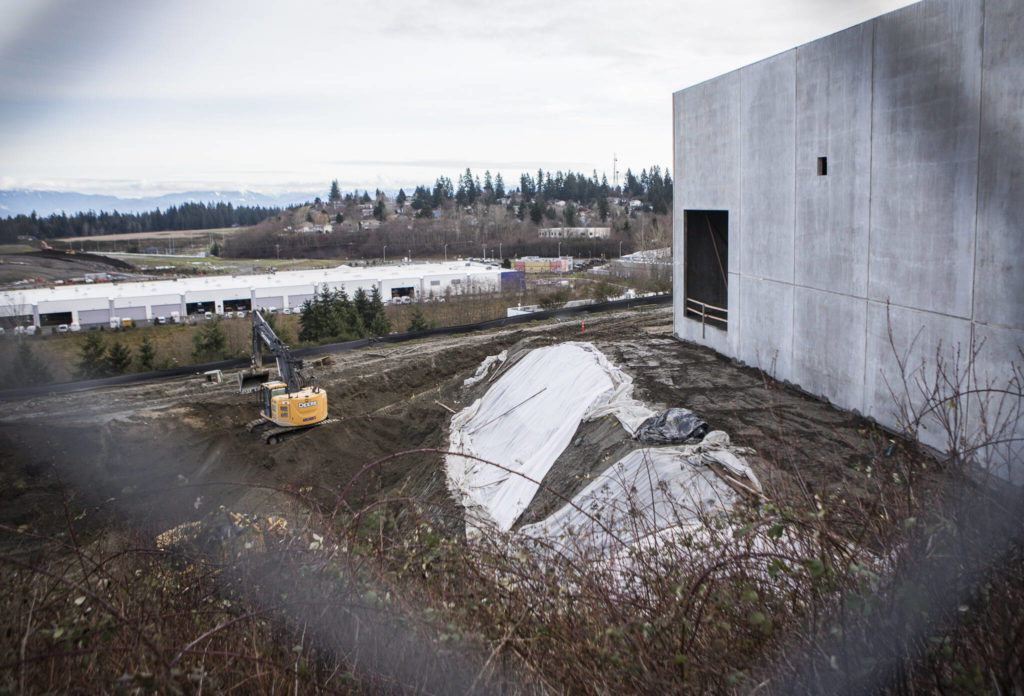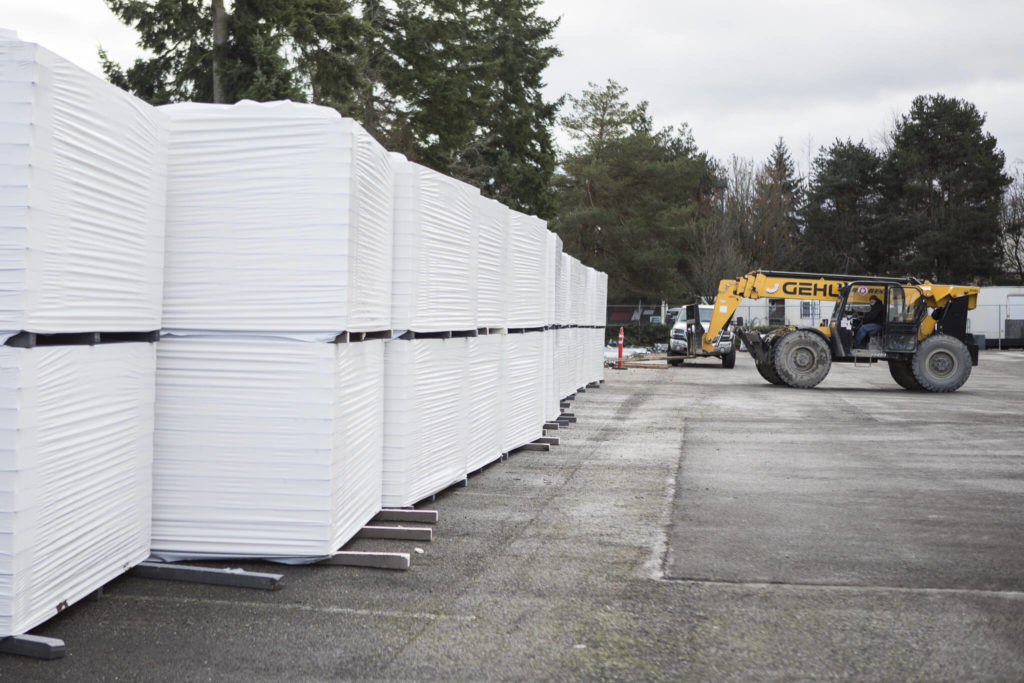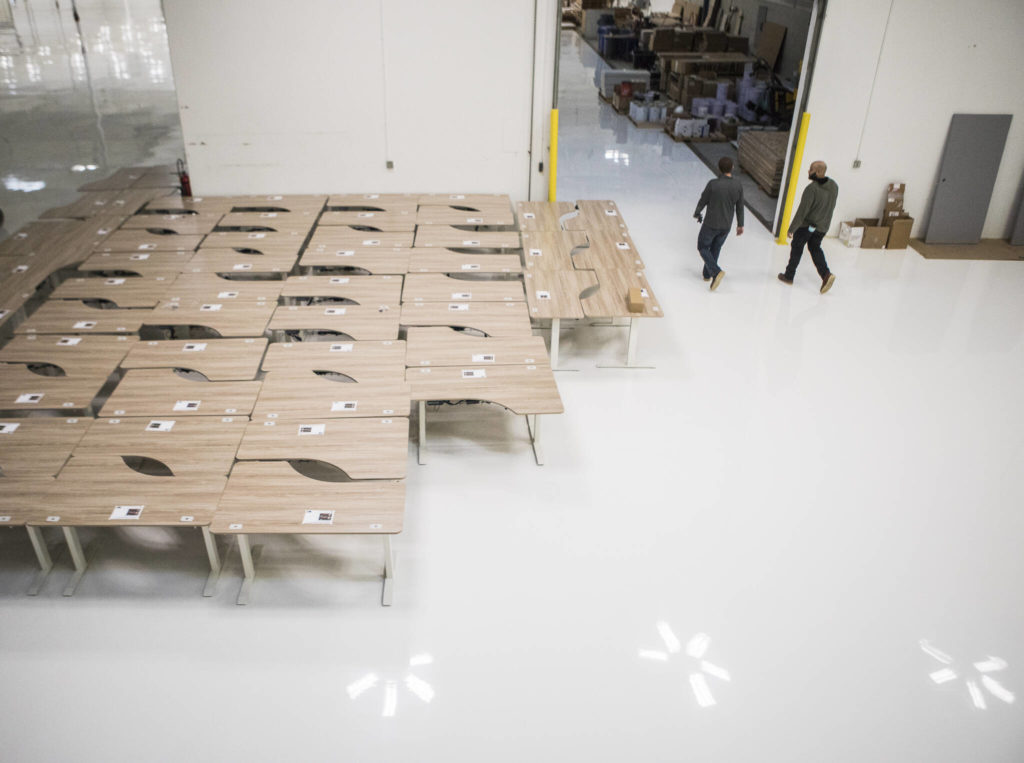EVERETT — David Kirtley spent three years studying nuclear fusion, the thermonuclear reaction that makes the sun and other stars shine.
Fusion has long been viewed as a potential zero-carbon source of energy that could serve as a tool in the fight against climate change.
“I started my graduate career saying I want to do something that changes the world, and fusion — and safe, clean electricity — was it,” said Kirtley, who has a doctorate in aerospace engineering and a master’s degree in nuclear engineering from the University of Michigan.
Kirtley, 42, eventually concluded that fusion wouldn’t happen in his lifetime.
He abandoned his research and turned to a career in aerospace.
The story might have ended there, except that technologies — from supercomputers to high-speed fiber optics — advanced.
Now Kirtley is CEO and co-founder of Helion Energy, an Everett-based company that has embarked on a multibillion-dollar effort to produce electricity from fusion.
When Kirtley and his co-founders developed a new fusion system that worked, “we were all in.”
From its new Everett headquarters, Helion Energy hopes to change how the world produces energy.
This month the company is relocating from Redmond to a 150,000-square-foot warehouse near Paine Field, for a four-fold increase in space.
The massive building has been dubbed Antares, after the red supergiant star, and will serve as Helion’s corporate headquarters, research facility and manufacturing center.
But the heart of the operation, a stone’s throw to the east, is a 30,000-square-foot concrete building that’s been under construction since July.
When completed, the structure will house Helion’s seventh-generation fusion generator, the company’s newest prototype, called Polaris.
Helion describes Polaris as the world’s first fusion electricity demonstration facility. By 2024, the device is expected to produce more energy than it takes in — what’s known as net electricity — a feat that would pave the way for commercial electricity production.
In November, a group of Silicon Valley investors, including Sam Altman, Helion’s chairman of the board, provided a $500 million capital infusion to fund Polaris.
Another $1.7 billion is available should Helion reach key milestones. Prior investments, including a Department of Energy grant, totaled nearly $80 million since the company’s founding in 2013, Helion said.
“People have generated a lot of energy from fusion. Others have shown that you can do fusion reactions. But no one has made electricity,” Kirtley said. “We ’ll be the first to do that.”
Electricity production is the second-largest source of greenhouse gas emissions in the United States. Greenhouse gases trap heat and make the planet warmer, according to the Environmental Protection Agency.
The Biden administration is pushing for the nation’s power-generating sector to be carbon-neutral — pollution-free — by 2035.
“In just a few years we will show that the world can count on fusion to be the safe, clean energy source that we desperately need,” Kirtley said.
The goal is to produce electricity at a cost of one cent per kilowatt hour, he said. The Snohomish County Public Utility District currently charges residential customers about 11 cents per kilowatt hour.
During a recent tour of Helion’s new headquarters, Kirtley wore black sneakers with bright magenta shoelaces.
His color choice was deliberate.
“When fusion occurs, the plasma, the fused material, glows hot pink,” Kirtley explained. “That is the fundamental color of fusion.”
What is fusion?
The sun and the stars shine because they are fusing hydrogen into helium. Each second, the sun converts 600 million tons of hydrogen into 596 million tons of helium. The remaining four tons is converted into energy.
“You take atoms of hydrogen, types of hydrogen, and fuse those atoms together at really high pressures to create helium, which releases energy,” Kirtley said.
Fusion in the sun’s core occurs at temperatures of around 15 million degrees Celsius. On earth, which doesn’t have the sun’s mass or gravitational forces, temperatures of more than 100 million degrees Celsius are necessary to achieve fusion.
In June, Helion published results claiming it was the first private company to heat a fusion plasma to more than 100 million degrees Celsius. Reaching that temperature was a critical engineering milestone. It is considered the ideal fuel temperature at which a commercial power plant would need to operate, Kirtley said.
Unlike nuclear fission, which obtains its energy from splitting atoms, fusion does not produce significant amounts of radioactive waste. The reaction can also be shut down almost instantly, said Jessie Barton, a company spokeswoman.
“Nuclear fusion is like an on/off switch,” Barton said. “We can instantly stop the machine from running. There’s no danger present. If there were a major earthquake, we’re looking at being able to to flip a switch and turn it off.”
A mile or so from Helion’s new headquarters, TerraPower, which occupies a 65,000-square-foot building near Paine Field, aims to build small, safe, carbon-free nuclear fission power plants.
Nuclear power plants, which rely on fission to generate electricity, produce no greenhouse gas emissions while operating. Over their life cycle, nuclear power plants produce about the same amount of “carbon-dioxide equivalent emissions per unit of electricity as wind” and one-third the emissions of solar power, according to the World Nuclear Organization. About 20% of the nation’s electricity is produced by nuclear power plants. Fossil fuels contribute the largest share of electricity, at 61%.
Kirtley declined to comment on TerraPower, instead reiterating Helion’s mission to produce a commercially viable source of electricity from fusion.
The fusion process can produce energy day and night. It works regardless of weather conditions and has zero risk of meltdown, Kirtley said.
Critics say that fusion is a “grand scientific challenge” that has not yet proven efficient or cost-effective, according to a recent article in The Bulletin of Atomic Scientists.
“In experiments to date, the energy input required to produce the temperatures and pressures that enable significant fusion reactions…has far exceeded the fusion energy generated,” the report said.
“I appreciate skeptics,” Kirtley said.
“I come at fusion as someone who originally said, ‘Look, fusion is not going to happen in my lifetime,’” he added.
“It wasn’t until I saw the approaches we took to directly harness the energy from fusion and turn it into electricity that I became a believer,” he said of a small, working system the company built. The method eliminates a steam turbine and the need to generate heat and boil water, he explained.
In Redmond, Helion’s sixth-generation fusion generator, Trenta, is doing fusion reactions every morning at 3 a.m., Kirtley said.
“We’ve already proven the key physics and the key engineering about fusion at that scale,” he said.
The fuel for Helion’s fusion reaction is deuterium, a form of hydrogen found in seawater. The oceans contain enough deuterium to generate billions of years worth of zero-carbon energy, Kirtley said.
To illustrate its efficiency, Kirtley points to an ordinary-sized bottle labeled “Helion. Fusion Fuel from Water.”
A bottle of deuterium provides enough energy in a fusion reaction to replace 10 million pounds of coal or one million gallons of oil — enough fuel to power 867 homes for one year.
“We’re not focused on making big power plants. We want to make 50-megawatt generator systems that can fit in a few shipping containers, Kirtley said.
At that size, “We can put it on a truck, ship it, install it and then run it.” A 50-megawatt system, for example, could power a data center, he said.
The next step is mass-producing fusion generators and distributing them as fast as possible to combat climate change, he said.
The company’s Everett location will be that manufacturing facility.
Choosing Everett
Snohomish County is used to building really big things, Kirtley said, like Boeing airplanes.
“We’re excited to expand to Everett and focus on growing our team,” Kirtley said. “We have a big team to build.”
The county is already home to a fair share of Helion’s workforce.
“A lot of our staff is now commuting from Snohomish County to Redmond,” Kirtley said. “It’s really nice to be able to locate here.”
The region possesses a unique combination of high technology computing, electronics and industrial manufacturing, he said.
“There’s not a lot of places where you can find that anymore, so the whole Pacific Northwest is perfect for us,” Kirtley said.
Helion scouted for properties in the Eastside suburbs and in Seattle, but Everett’s deepwater port, rail linkages and commercial airline service helped clinch the deal, Kirtley said.
“Helion is going to change the world,” said Everett Mayor Cassie Franklin, who attended a groundbreaking ceremony for the Polaris facility in July. “I’m so grateful this amazing, innovative company has chosen Everett for this new fusion facility.”
“We’re about 70 people right now,” Kirtley said. “We’re hiring about two people a week, which is a pretty wild pace.”
“Our aim is to get these systems operating throughout the world and show that they’re safe,” he said.
“We can start addressing public utilities after that,” Kirtley said. “I expect to be having long conversations with Snohomish County PUD — they’re on the front end of clean, renewable, low-carbon electricity.”
As a reminder of Helion’s critical mission, Kirtley had the warehouse doors at the former aerospace manufacturing facility removed.
In their place are huge windows exposing breathtaking views of Mount Baker and the north Cascade Range.
“The world needs this” Kirtley said. “I’ve watched the climate change, here, in the 13 years I’ve lived in Washington.”
For Kirtley, the mountains are a towering symbol of what is at stake.
“When I was younger, I did a lot of mountain climbing,” Kirtley said. “The view from Mount Rainier is amazing, but year after year, I watched the amount of glaciers go down.”
He stopped for a minute in front of the bank of windows.
“For the team and the mission we’re trying to solve, it’s a big challenge, but it’s worth it,” he said.
Janice Podsada; jpodsada@heraldnet.com; 425-339-3097; Twitter: @JanicePods.
Talk to us
> Give us your news tips.
> Send us a letter to the editor.
> More Herald contact information.
